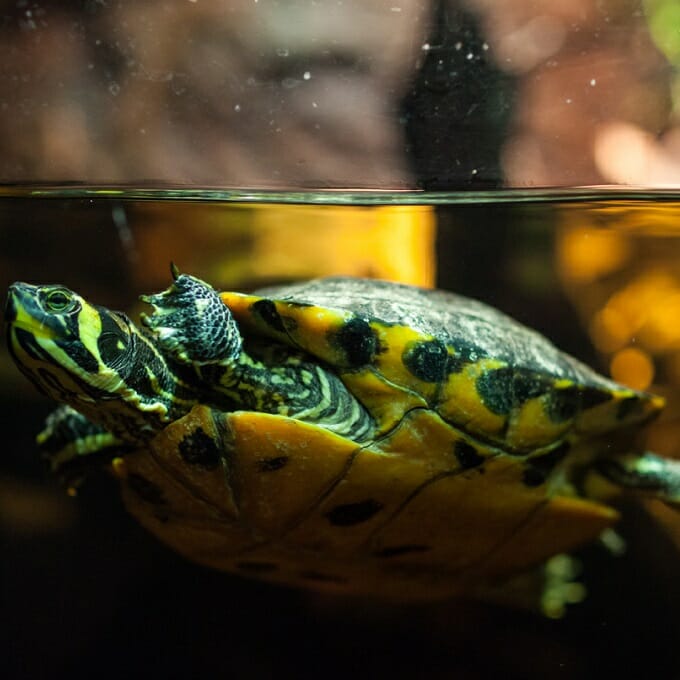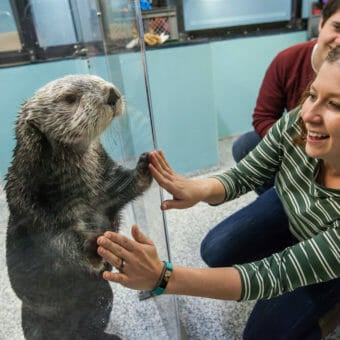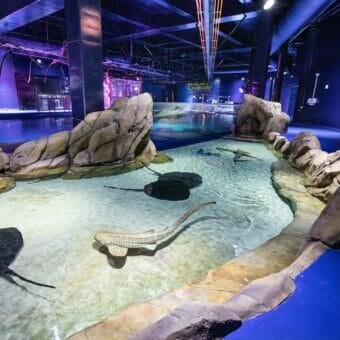-
Size
5-8 inches (13-20 cm) -
Diet
Omnivorous -
Range
North America -
Habitat
Rivers, ditches, sloughs, lakes, ponds
Physical Characteristics
- Bands of yellow streak the carapace, or shell. Most easily visible when they’re wet.
- Yellow blotch behind the eye which is more visible in females and young individuals.
- The lower jaw of a slider is rounded, whereas it is flat for members of other genera.
- Common carapace length is 5-8 inches (13-20 cm) with a maximum size of 11.4 inches (29 cm).
Animal Fun Fact
Yellow-bellied sliders are omnivores, eating a wide variety of plant and animal matter.
Diet / Feeding
- Omnivorous; diet consists of a wide variety of plant and animal matter.
Range / Habitat
- Occurs in North America from southeast Virginia through north Florida and Alabama.
- Found in rivers, ditches, sloughs, lakes and ponds. Will bask on logs or other surfaces protruding from the water. Will haul out on banks in the western parts of its range.
Reproduction & Growth
- Oviparous, egg-laying species.
- Males will do courtship displays to attract a female. This may include biting, chasing or foreclaw displays.
- Females build nests and may use the same location for nests every year if they’ve had success in the past.
- After the eggs hatch, hatchlings may remain in the nest for up to 10 months, though, there is no parental care during this time.
Conservation Status
- “Least Concern” on the IUCN Red List.
Additional Information
- Fellow subspecies include red-eared, Cumberland and big bend sliders.
- Hybridization between similar species is not uncommon.
Sources
- Conant, Roger and Joseph T. Collins. A Field Guide to Reptiles & Amphibians: Eastern/Central North America. Pgs. 174-178.
- http://www.iucnredlist.org/details/22028/0







